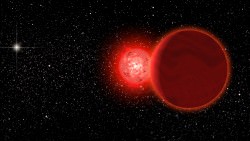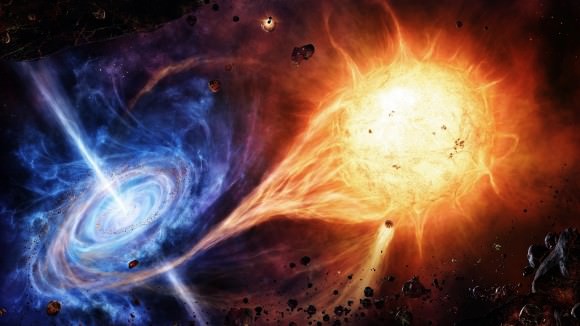One of the interesting consequences of quantum theory is that particles can randomly appear in the cosmos, and if you wait long enough, conscious minds and maybe even whole new Universes. Welcome to the baffling concept of Boltzmann brains.
We blow minds here on Guide to Space.
All we want is for you to start watching, especially on a topic that you knew something about. And then you say “whoa…” when you realize the cosmic scope of an idea, like black holes, gamma ray bursts, or the Fermi Paradox.
Today, I think some kind of warning is in order. We’re going to blow your mind so thoroughly, that you’re going to be a hollowed out shell for the next few days. You’ll going to stumble around, glassy-eyed, in an almost catatonic state as you contemplate the humbling awesomeness of the Universe.
Let’s start with a familiar landscape, the implications of infinite time and space. The Universe might be infinite in space. Once you’re talking about infinity, a lot of strange ideas join the party over at Prismo’s.
Even if the Universe isn’t infinite in space it’ll most likely be infinite in time, expanding at an accelerating pace thanks to the leftover momentum from the Big Bang and dark energy. One way or another, there’s infinity in play. Thanks to quantum mechanics, the Universe is all about probabilities.
The air inside your living room is most likely going to remain evenly spaced, so you can breathe it and stay conscious. But there’s a teeny, tiny chance. A chance so small, that it’s not worth considering, that all the atoms of air in the room will spontaneously shift their position into one tiny corner, or maybe to the Andromeda Galaxy. The chances are small, it’ll practically never happen.
Once you’re dealing with forever, however, almost never, means sometimes always. You can imagine a situation, in an incomprehensible amount of time where quantum fluctuations spontaneously generate a hydrogen atom, floating in space, or perhaps a sperm whale or potted petunias.
We’re talking a seriously long amount of time. Long after all the stars have used up their hydrogen and died. Long after even the most supermassive black holes have evaporated away. If you could wait long enough, these quantum fluctuations would just pop things into existence.
One of the most compelling ideas is the concept of a Boltzmann Brain, named after the physicist Ludwig Boltzmann. It’s possible that entire, fully conscious minds could appear randomly in the cosmos. Keep rolling the dice for an infinite amount of time, and eventually, you’re going to get that Paladin with 18 charisma, 18 strength and a dreamy voice like Patrick Stewart.
The chances of this are 10 to the power of 10 to the power of 50. That’s a huge huge number. Trust me, you’re going to need more pencils to even write it out. Actually, you could turn every atom of the Universe into a pencil and it wouldn’t be enough.
Just imagine what it would be like to be that self-aware conscious entity that suddenly appeared floating in a completely empty cosmos, contemplating the mystery and wonder of all that vast nothingness. Perhaps it’s just a bunch of telepathic screaming because one thing this particular brain was missing was the ability to survive in a vacuum.

Now, then imagine an entire planet, orbiting a sun-like star, filled with human beings and other life. Again, that number is even more incomprehensibly small, but it’s not zero. And so, in a Universe of infinite space, those things are popping up an infinite number of times, and in infinite time, it’ll happen an infinite number of times.
And now, I shall deliver the final mind bending blow. Imagine you took all the particles and energy in the entire Universe. All the protons, photons, neutrons and hadrons. There’s a tiny, tiny chance that all those particles could suddenly appear in an infinitely dense region of space, and undergo a rapid expansion.
In other words, it’s possible that another Big Bang could spontaneously appear in an infinite amount of time. How long? Physicist Sean Carroll has done the math. You’d just need to wait 10 to the power of 10 to the power of 10 to the power of 56 years for it to happen.
It’s a long time, but it’s not forever. So, in an infinite amount of time, you’ll get an infinite number of Big Bangs, spontaneously appearing in a finite Universe. Or an infinite number of Big Bangs happening all the time in an infinite Universe.
I’d drop my mic now, but it’s sort of clipped onto my shirt here. So imagine that’s what I just did.
Can’t wrap your mind around these ideas? Don’t worry, just wait a nearly infinite amount of time, and a better version of me will spontaneously appear to explain them a little better. Thanks infinity.
We love to bend minds here at the Guide to Space. What ideas should we talk about next? Post your suggestions in the comments!



